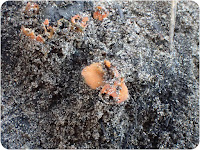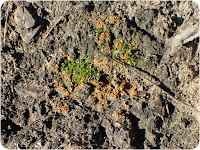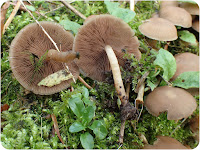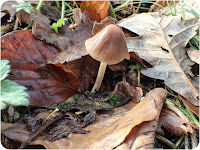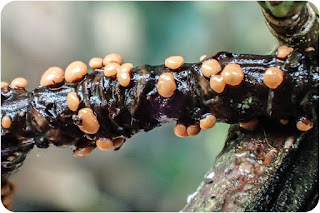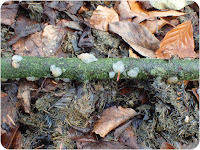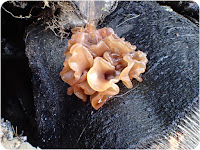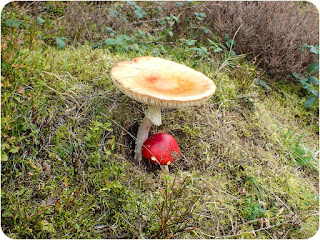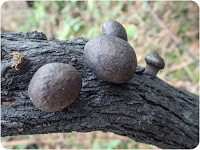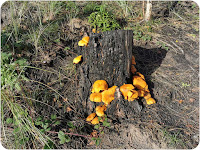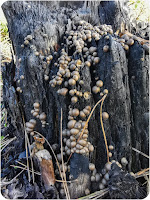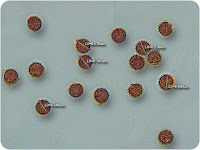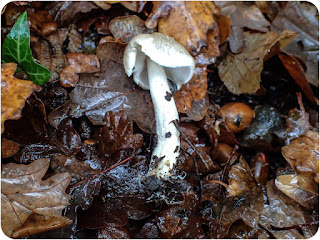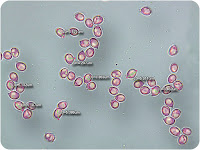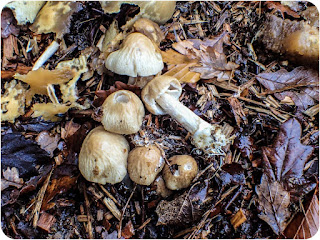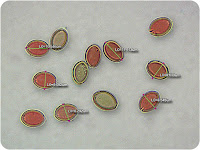A few more visitors to the burnt out area of Pembrey Forest. It really has been an interesting place this year and hopefully will be for a few more years to come!
 |
| Ischnoderma benzoinum, the Benzoin Bracket |
Firstly a layered bracket fungus growing on a burnt out Pine stump. The photo taken on site was in harsh sunlight and did not show the zoning marks in various shades of brown on the cap surface. The underside was white with small pores that turned brown on handling. The spores were sausage-shaped and measured ~5.5 x 2.4 um. Looking through "Fungi of Switzerland" a very good fit would be Ischnoderma benzoinum, the Benzoin Bracket. Not very rare but under-recorded in Wales with only a couple of records.
 |
| Peziza petersii |
The second visitor is a Peziza species.A handy characteristic of Peziza species is that the tips of the asci turn blue with Melzer's Reagent, which easily shows up in the microscope images. In this specimen the spores are quite characteristic, being small and wart. Referring to Peter Thompson's book "Ascomycetes in Colour" the only one with these characteristics is Peziza petersii. This species also has a strong preference for burnt ground so I feel OK with calling it that. But, as always, please comment.
Another visitor was an eyelash fungi. Hard to notice at first but once you see them, they were everywhere on the burnt ground. Here, from the shape of the spores, Peter Thompson's book gives 2 alternatives Anthracobia macrocystis and A. melaloma. Both it seems are found on burnt ground in coniferous woodland. However A. macrocystis is very much smaller at ~ 3mmin diameter whereas the specimen found was ~5-6 mm, more the size of A. melaloma, and so more likely to be the one here in Pembrey.








